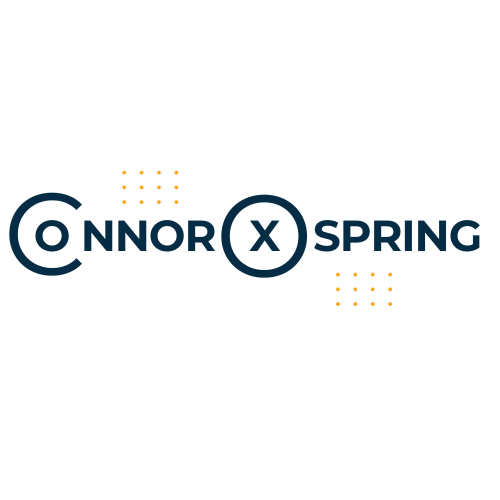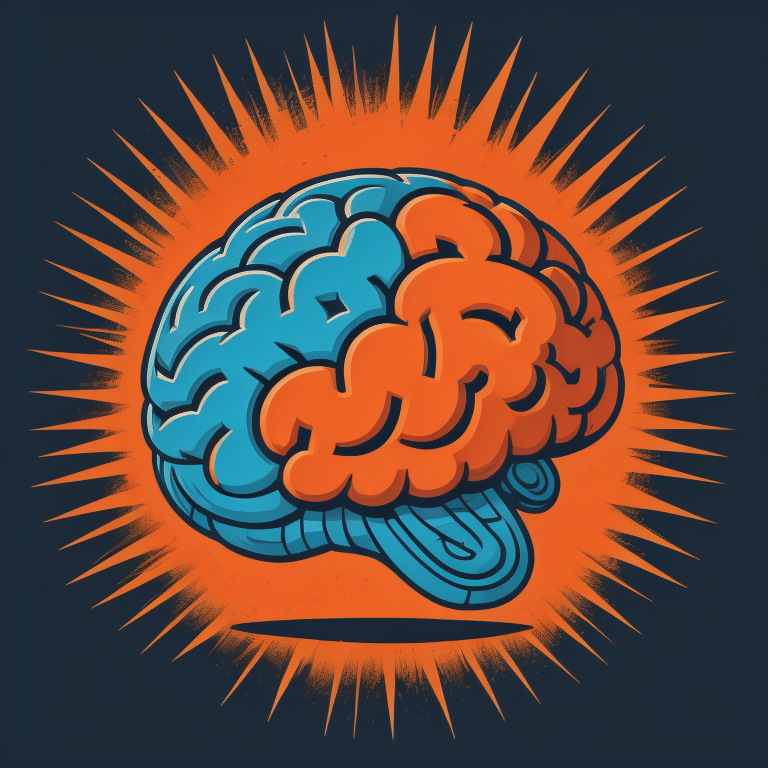Following on from my article entry that explored setting my life pillars and goals for next 10 years – today I want to talk about building “My External Brain”. In this entry I will explore what I mean by this term and why I believe it is the very best method to achieve the goals I have set out.
What is an External Brain?
My “External Brain” is the creation of a digital storage space where I can search anything that I have documented over the years. The idea is to ensure anything that I find interesting in both my experiences and reading is documented. Our brains are notorious for forgetting details. Not only this, but we cannot search our brains for a specific topic that we learnt several years ago.
With tech we can avoid both of these problems. With the functionality of search we have all of the information we need at our fingertips. We also free up presious space in our brain to focus on the present moment. More importantly we are able to allow our minds to take a breath and focus on those things that are the most important.
A cluttered brain is an inefficient brain.
Computer vs The Brain
Humans have limitations in memory capacity and the processes involved in memory retention and retrieval, leading to the phenomenon of forgetting, which is a natural aspect of human memory. Forgetting is not a flaw but a mechanism that aids in improving memory performance by reducing interference and the number of retrievals. The exact reason for forgetting in humans, whether it involves actual loss of information or retrieval issues, remains unclear.
Just like a computer, when our memory is close to capactiy we are unable to store more information. At this point you have two options, you either delete something or you buy more storage.
Unfortunatly you cannot buy more storage for your brain (well not yet at least). Writing down important information serves as an external memory aid that can compensate for the limitations of human memory.
Why The Creation of An External Brain Matters?
Through the creation of a digital brain we are able to ensure that important information is stored in a location where it will never be forgotten. If done right, we can also include diagrams, drawings and models that allows us to retain information more effectivley. Research has shown that creating drawings of information can provide memory benefits in free recall compared to writing alone.
In our digital brains we are also able to create detailed quality notes of our experiences and lessons in life. The quality of notes taken, influenced by factors such as transcription fluency and verbal working memory, can predict skill in retaining information. By creating quality notes in our digital brain we improve our ability to retain information that we will often forget upon reading that non-fiction book.
By forgetting the information and not taking action with the lessons learnt from these books – we waste our time reading the book in the first place. Non-fiction books are to learn and apply. By forgetting and not creating an external note, we gain no value from these books.
Reduction in Anxiety and Overload
The abiltiy of cognitive offloading, as explored in studies, indicates that externalising items from memory allows us to remove the stress of remembering key information.
To understand how note-taking and writing down information can reduce anxiety and overload on our brain, it is essential to consider the cognitive benefits associated with these practices. Note-taking serves as an external memory aid that offloads cognitive processes, thereby reducing the burden on the brain and enhancing memory retention.
By externalising information through writing, we can alleviate the pressure on our working memory and free up mental resources, leading to reduced cognitive overload and improved focus. By ensuring that we are able to free up this presious space we can ensure we are present and focused on the task at hand. We are never worrying about forgetting that important thing we read last week.
Building My Digtal Brain – How To Do It
So, how do we develop this external brain. Well, this will be different for everyone but I will tell you how I plan to do it.
As I mentioned in my last article one of the systems I will using is the app Finch. There are three other systems that I will use and I have included them below.
Finch – My Habit Brain
The tasks that I place in Finch are those that are meant to be repeated. If I need to do it daily, weekly, monthly or annually – this is where these items are stored.
I have been using Finch daily for two months now. It has become my go to app for forming daily habits. In my last article, I explored how I am using this app to ensure that I am working towards my life aspirations on a daily basis. By forming habits on this app I am able to ensure I am consistant over a long period of time – improving incrementally everyday.
By taking this information and placing it into the digital domain – I can ensure that I do not forget to do one of a number of tasks everyday. With the apps ability to insentivise you to complete tasks with rewards, I have been able to complete all my tasks for the last 60 days.
Also, I have found that I am far less anxious about forgetting to do something that will take me one step closer to my life pillars (my purpose and life mission). At the end of the day I can rest easy knowing that I am doing those items I have deemed important in my life. Everyday I have felt accomplished and my mind has settled considerably.
Evernote – My Knowledge And Project Brain
Now for the my “Knowledge and Project Brain”.
This part of the digital system has been created for four purposes.
| Category | Description |
|---|---|
| One-Off Task | I have found that Finch works best for those tasks that work best from habit formation. I want to avoid cluttering this system with those items that are commonplace daily activities. |
| Project & Business Tasks | In most cases, these items can change from month to month. The overarching goals remain the same but depending on the needs of the project and changing external factors these tasks are dynamic. As such I have chosen to document and capture these in the Evernote system. |
| Knowledge | I wanted to have a system that had a search system based on keywords. No matter when I have added a new note, I can search for any information that I require. This will include book summaries, quotes, important information, research and anything that I have found interesting. |
| Ideation | I will also use this section of my digital brain to store any ideas I have. The best part with Evernote, as I always have my phone handy, I can store any ideas that come to mind. Most of which come to me while I am walking or relaxing on an evening. |
Google Calendar – My Event Brain
Now, let’s delve into my “Event Brain”, courtesy of Google Calendar.
Organisation and Schedule Management
This aspect of my digital system serves as the cornerstone for organising my schedule, appointments, and events. From client meetings to personal commitments, Google Calendar keeps me on track with what’s coming up and where I need to be.
Intuitive Interface and Integration
With its intuitive interface and seamless integration across devices, Google Calendar has become my indispensable tool for time management. I can set reminders, invite others to events, and even colour-code my schedule for better visualisation.
Sync Across Platforms
One of the features I particularly appreciate is the ability to sync my calendar across different platforms. Whether I’m accessing it from my laptop, smartphone, or tablet, I always have my schedule at my fingertips. This ensures that I never miss an important appointment or deadline.
Flexibility and Adaptability
Moreover, Google Calendar’s flexibility allows me to adapt to changes on the fly. If a meeting gets rescheduled or a new event pops up, I can easily adjust my calendar accordingly. This agility is crucial in today’s fast-paced world, where priorities can shift at a moment’s notice.
Google Drive – My Memory Brain
Last but certainly not least, let’s explore my “Memory Brain” housed within Google Drive.
Digital Repository and Collaboration
Google Drive serves as my digital repository for all things related to documentation, storage, and collaboration. From important files to cherished memories, Google Drive ensures that everything is safely stored in the cloud and easily accessible whenever I need it.
Seamless Integration with Google Services
One of the standout features of Google Drive is its seamless integration with other Google services, such as Docs, Sheets, and Slides. This allows me to create, edit, and collaborate on documents in real-time, whether I’m working solo or with a team.
Versatility in Storage
The versatility of Google Drive extends beyond just documents. I can store photos, videos, and other multimedia files, ensuring that my digital memories are preserved for years to come. With ample storage space available, I never have to worry about running out of room.
Robust Sharing Capabilities
Moreover, Google Drive’s robust sharing capabilities make collaboration a breeze. Whether I’m sharing a project with colleagues or collaborating on a presentation with friends, I can easily control who has access to my files and how they can interact with them.
Digital Security – Protecting My Digital Assets
In today’s interconnected world, safeguarding my digital assets is of utmost importance. From sensitive documents to personal information, ensuring that my data remains secure is a top priority.
Implementation of Security Measures
To achieve this, I’ve implemented various security measures across my digital ecosystem. From using strong, unique passwords for each account to enabling two-factor authentication wherever possible, I take proactive steps to thwart potential cyber threats. I have also invested in the Google One VPN to ensure that my online searching and IP are hidden from those that seek to exploit my data.
Regular Updates and Vigilance
Furthermore, I regularly update my software and apps to patch any vulnerabilities that could be exploited by hackers. By staying vigilant and proactive, I minimise the risk of unauthorised access to my digital assets.
Practising Digital Hygiene
Moreover, I’m mindful of the information I share online and exercise caution when interacting with unfamiliar websites or services. By practising good digital hygiene, I can protect myself against phishing attempts, malware infections, and other cyber threats.
Streamlining Workflows – Maximising Efficiency
In today’s fast-paced world, efficiency is key to staying productive and achieving success. That’s why I’m constantly looking for ways to streamline my workflows and eliminate unnecessary friction from my daily tasks.
Leveraging Automation and Productivity Tools
One of the strategies I employ is leveraging automation tools to handle repetitive tasks and streamline routine processes. Whether it’s scheduling social media posts or generating reports, automation allows me to focus on high-value activities that require human input.
Utilising Productivity Apps and Software
Additionally, I utilise productivity apps and software to optimise my workflow and enhance collaboration with colleagues. From project management tools to communication platforms, these tools empower me to work smarter and achieve more in less time.
Final Thoughts
My digital external brain plays a crucial role in helping me stay organised, productive, and focused on my goals. By leveraging tools like Finch, Evernote, Google Calendar, and Google Drive, I can effectively manage my tasks, projects, events, and digital assets with ease.
Anyway that is what my system looks like. If I make any amendments to my “external brain” I will provide updates. If you have your own system or anything software that you use please reach out and let me know.
Take care.


